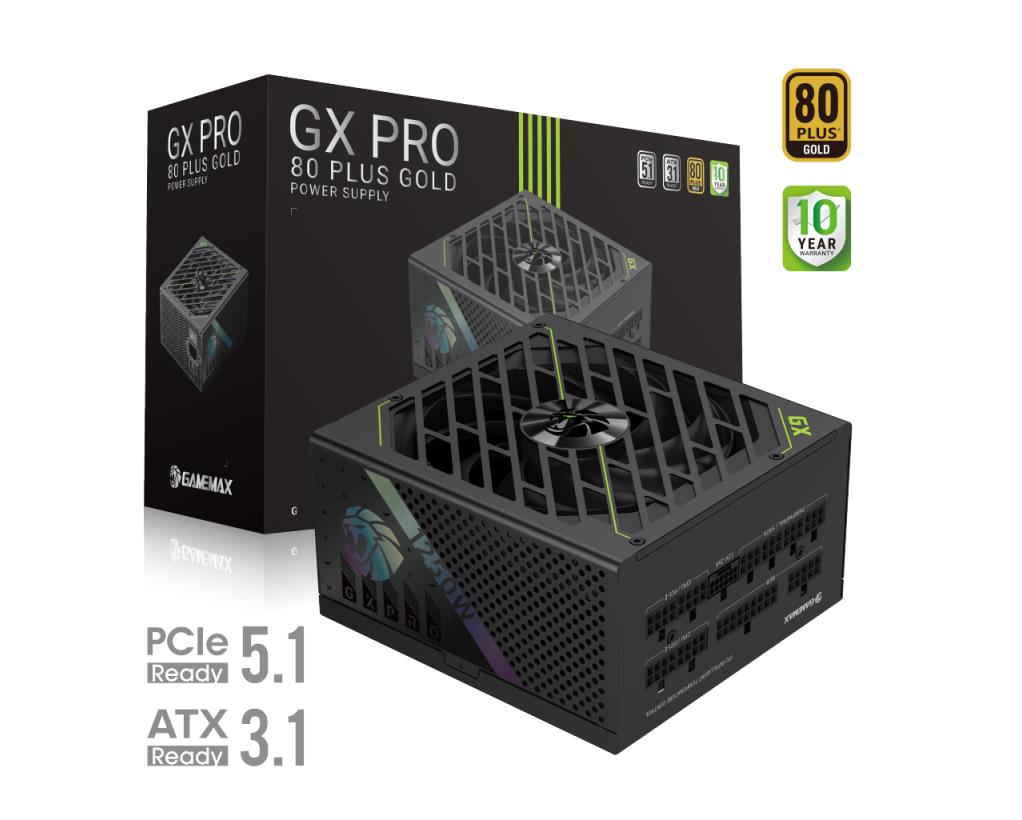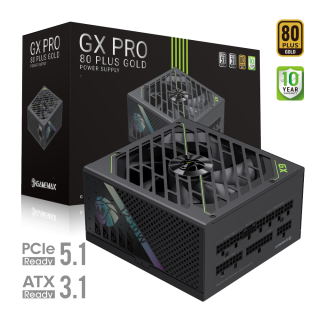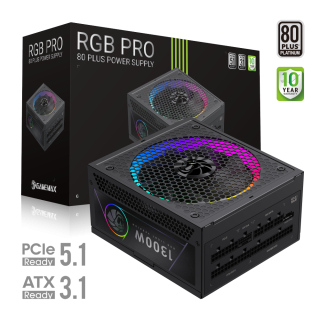In the realm of PC hardware, the choice of Power Supply Unit (PSU) directly impacts system stability and long-term operational costs. As representatives of high-end PSUs, 80 Plus Gold and Platinum certifications denote significant differences in energy efficiency, component quality, and use cases. This article dissects their technical nuances, real-world performance, and purchasing considerations to help users make informed decisions.
According to the 80 PLUS certification system, the efficiency requirements for Gold and Platinum PSUs are as follows:

Gold: ≥87% efficiency at 20% load, ≥90% at 50% load, ≥87% at 100% load
Platinum: ≥90% efficiency at 20% load, ≥92% at 50% load, ≥89% at 100% load
At a typical 50% load, Platinum PSUs achieve a 2% higher efficiency than Gold models. For example, under a 550W load, a Gold PSU draws approximately 625W from the grid, while a Platinum unit requires only 611W—a 14W difference. While this translates to marginal long-term energy savings in home use, the gap widens in high-load scenarios.
Assuming 8 hours of daily use and an electricity rate of 0.5 RMB per kilowatt-hour (kWh):
Gold PSU: Annual power consumption ≈ (550W / 0.9) × 8h × 365 ≈ 1,803 kWh
Platinum PSU: Annual power consumption ≈ (550W / 0.92) × 8h × 365 ≈ 1,776 kWh
Annual savings: (1,803 – 1,776) × 0.5 ≈ 13.5 RMB
While savings are modest for typical home use, Platinum PSUs shine in 24/7 server or high-load workstation environments, where annual savings can reach hundreds of yuan.
Platinum PSUs often incorporate premium components:

Capacitors: Tantalum capacitors or Japanese 105℃ solid-state capacitors, offering superior temperature resistance and lifespan compared to the Taiwanese capacitors commonly used in Gold models.
Cooling Design: Larger heat sinks and low-noise fans ensure better thermal management under heavy loads.
Circuit Design: More sophisticated DC-DC conversion modules minimize voltage ripple and improve stability.
Load Regulation: Platinum PSUs exhibit tighter voltage control during load fluctuations. Tom’s Hardware testing shows voltage deviation within 1% during 10%–100% load transitions, versus up to 1.5% for some Gold models.
Warranty: Platinum PSUs typically come with 10-year warranties , compared to 5–7 years for most Gold units .
Platinum PSUs excel in low-noise operation, thanks to advanced cooling designs. For instance, the Seasonic Focus PX (Platinum) stops its fan below 40% load, while the Focus GX (Gold) requires 50% load to activate passive cooling.
Home/Office Use: Gold PSUs offer excellent cost-effectiveness for everyday needs.
High-End Gaming/Overclocking: Platinum PSUs provide stable power delivery and quieter operation for demanding systems.
Data Centers/Workstations: Platinum’s efficiency and longevity significantly reduce operational costs in 24/7 environments.
ATX 3.0 Support: Leading 2025 Platinum models fully comply with ATX 3.0, supporting peak power demands of PCIe 5.0 graphics cards.
Modular Design: Most Platinum PSUs feature fully modular cabling , enhancing cable management and upgrade flexibility.
An 850W Platinum PSU typically costs 30–50 USD more than its Gold counterpart. At a yearly savings of 13.5 RMB, it would take 15–20 years to recoup the price difference in home use. Thus, Gold PSUs offer better value unless sustained high loads are expected.
Platinum PSUs excel in extreme efficiency, premium components, and long-term reliability, catering to users who demand the utmost performance. Gold PSUs, however, strike a balance between cost and quality, making them the pragmatic choice for most scenarios. When selecting a PSU, prioritize reputable brands and independent test results over certification alone. For the average consumer, a fully modular 80 Plus Gold PSU delivers ample performance without overspending.

GX PRO 1250G 80 Plus Gold Modular Power Supply: ATX3.1 Ready, Silent Cooling, & Premium Durability
• 80 Plus Gold Efficiency & Quiet Operation: Achieves 90% efficiency under typical loads with APFC+LLC+DC-DC design, minimizing power waste and noise.
• Premium Durability & Reliability: Built with Japanese 105°C capacitors and solid capacitors for long-term stability and performance.
• ATX3.1 & PCIe5.1 Ready: Features a native 12V-2x6 connector for seamless RTX 40/50 GPU compatibility and efficient power delivery.
• Advanced Thermal Management: 13.5cm FDB fan with intelligent temperature control ensures quiet cooling and optimal heat dissipation.
• Modular Design & Robust Protection: Fully modular layout with dual-stage EMI filtering and NTC thermistor safeguards against surges, while gold-plated cables ensure durable, high-conductivity connections.

RGB PRO 1300P 1300W 80+ Platinum ATX3.1 Power Supply with Adaptive Fan & ARGB SYNC
• 80 Plus Platinum Efficiency: Delivers 92%+ efficiency under typical loads, cutting power use and noise for dependable performance.
• ATX3.1 & PCIe5.1 Support: Native 12V-2x6 connector ensures seamless power to RTX 40/50 GPUs, optimizing delivery and reducing loss.
• Adaptive Fan Control: 14CM fan auto-adjusts speed based on load, balancing energy efficiency with quiet operation.
• High-Quality Components: Japanese 105°C and solid capacitors guarantee durability, stability, and reliability for intensive tasks.
• Customizable RGB Lighting: 25 lighting modes with memory and ARGB SYNC support, enabling personalized and synchronized visual effects.